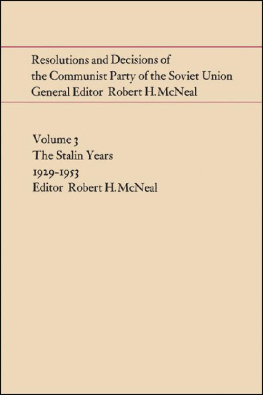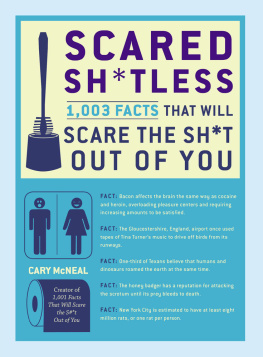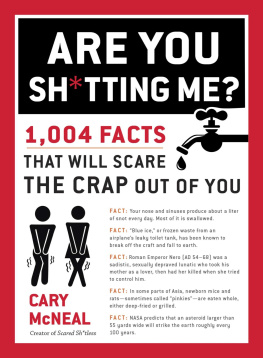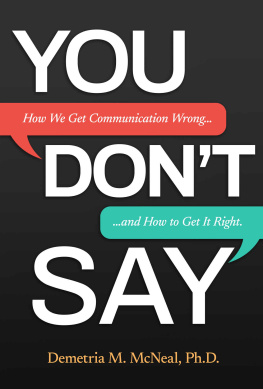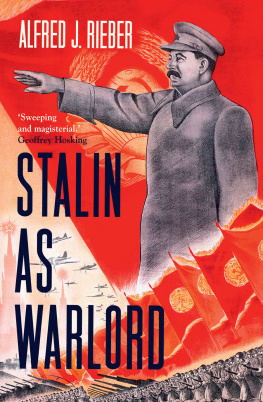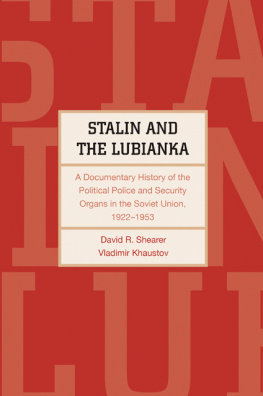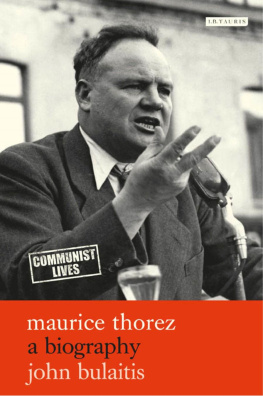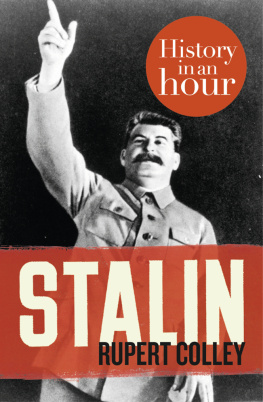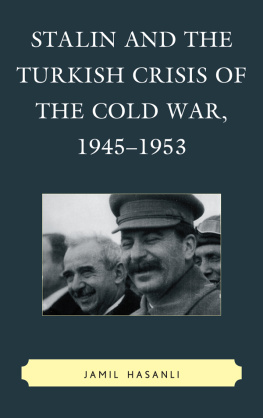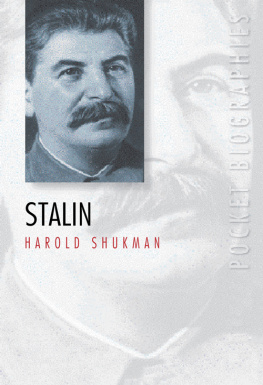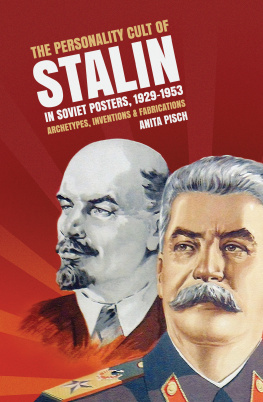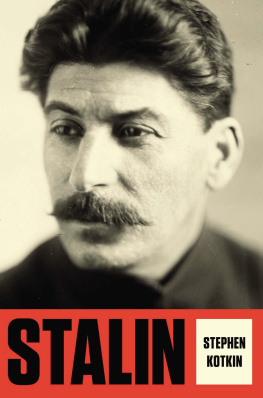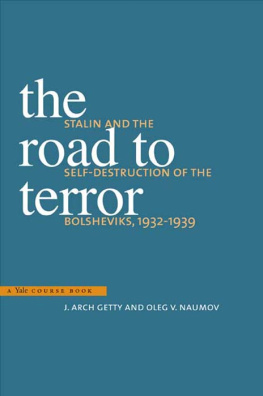McNeal - Resolutions and decisions of the Communist Party of the Soviet Union. Volume 3, The Stalin years 1929-1953
Here you can read online McNeal - Resolutions and decisions of the Communist Party of the Soviet Union. Volume 3, The Stalin years 1929-1953 full text of the book (entire story) in english for free. Download pdf and epub, get meaning, cover and reviews about this ebook. City: Toronto, year: 1974, publisher: University of Toronto Press, genre: Politics. Description of the work, (preface) as well as reviews are available. Best literature library LitArk.com created for fans of good reading and offers a wide selection of genres:
Romance novel
Science fiction
Adventure
Detective
Science
History
Home and family
Prose
Art
Politics
Computer
Non-fiction
Religion
Business
Children
Humor
Choose a favorite category and find really read worthwhile books. Enjoy immersion in the world of imagination, feel the emotions of the characters or learn something new for yourself, make an fascinating discovery.
Resolutions and decisions of the Communist Party of the Soviet Union. Volume 3, The Stalin years 1929-1953: summary, description and annotation
We offer to read an annotation, description, summary or preface (depends on what the author of the book "Resolutions and decisions of the Communist Party of the Soviet Union. Volume 3, The Stalin years 1929-1953" wrote himself). If you haven't found the necessary information about the book — write in the comments, we will try to find it.
McNeal: author's other books
Who wrote Resolutions and decisions of the Communist Party of the Soviet Union. Volume 3, The Stalin years 1929-1953? Find out the surname, the name of the author of the book and a list of all author's works by series.
Resolutions and decisions of the Communist Party of the Soviet Union. Volume 3, The Stalin years 1929-1953 — read online for free the complete book (whole text) full work
Below is the text of the book, divided by pages. System saving the place of the last page read, allows you to conveniently read the book "Resolutions and decisions of the Communist Party of the Soviet Union. Volume 3, The Stalin years 1929-1953" online for free, without having to search again every time where you left off. Put a bookmark, and you can go to the page where you finished reading at any time.
Font size:
Interval:
Bookmark:
The Stalin Years
19291953
The four volumes in this series are edited as an integral set. Each contains a subject index in which Russian abbreviations and acronymic names are translated. Tables summarizing the personnel of the main party executive bodies since 1917 are also provided. At the same time each of the volumes is built around a coherent period in the development of Russian Communism, and each reflects the special features of its time.
Volume 3 treats the Stalin era, the early phase of which witnessed a new degree of party intervention in agriculture, industry, and cultural affairs. The ambivalent relation between the party and Stalin's great purge emerges in party decisions of the later thirties, including an archival document never published in the Soviet Union and some little known material on the Central Committee plenum of FebruaryMarch 1937. The Zhdanov campaign in the arts following the World War is also represented by the party resolutions translated in this volume.
ROBERT H.MCNEAL is Professor of History at the University of Massachusetts at Amherst. He has written numerous books and articles of which his principal works are The Bolshevik Tradition: Lenin, Stalin, Khrushchev, International Relations among Communists, Bride of the Revolution: Krupskaya and Lenin, and Guide to the Decisions of the Communist Party of the Soviet Union 1917-1967.
Resolutions and decisions of the Communist Party of the Soviet Union
Volume 3
The Stalin Years: 19291953
Editor: Robert H. McNeal

University of Toronto Press 1974
Toronto and Buffalo
ISBN 0-8020-2157-3
LC 74-81931
Russian terms are translated if a generally accepted English form exists, but are transliterated otherwise. In the latter case the term (e.g., oblast) is treated as an anglicized expression, without hard and soft signs (except in titles), to simplify the appearance of the text. The index of the volume provides parenthetical translations of transliterated terms. Translations of periodical titles appear with the first occurrence of a given title.
Document numbers (e.g., ) are supplied by the editor of the volume; the prefix 3. indicates the volume number in the present series. Throughout the book such a decimal number implies reference to a document number.
Square brackets [] enclose material added by the editor of this volume, while parentheses appearing in documents are in the original Russian text. Brackets are used in titles of documents if the original version of a given resolution lacked any definite title. Ellipses () indicate omissions of part of the original document by the editor, unless otherwise specified.
To assist the reader in identifying changes in successive versions of the party Rules, bracketed notes are inserted with each article, indicating whether it is a new, revised, or unchanged article with respect to the previous version of the Rules. Since this volume contains three successive versions of the Rules (1934, 1939, 1952), and there is considerable repetition of articles from one version to another, the full text of all articles is provided only in the first (1934) version. Thereafter articles of the Rules that repeat an article from the previous version are covered with a cross-reference to the previous version.
At the end of each document or group of documents adopted at a given meeting source attributions are provided. On the left the earliest published source that was accessible to the editor is cited. On the right the location of the material in the standard Soviet reference work is cited: Kommunisticheskaia Partiia Sovetskogo Soiuza v rezoliutsiiakh i resheniiakh sezdov, konferentsii i plenumov TsK (Communist Party of the Soviet Union in Resolutions and Decisions of Congresses, Conferences and Plenums of the Central Committee), 8th edition, Moscow, 197072 (hereafter abbreviated KPSS v resoliutsiiakh). Not all documents published in the present work appear in KPSS v rezoliutsiiakh, so citations of this source do not appear in every case.
The end of each set of documents emerging from a congress, or Central Committee plenum is indicated by the following symbol: 
The Stalin Years 19291953
Viewed from a certain distance, the years of Stalins ascendancy in the Soviet Union appear to have a notably consistent character, despite the cataclysmic interruption of the Second World War. Massive economic campaigns, unflinching vigilance against enemies of the people, glorification of Soviet patriotism with its core of Great Russian nationalism, and above all the omnipresent, benignly petrified countenance of the vozhd (leader) these are the images of the Stalin era. On a sufficiently large scale they are valid enough, but even moderately close inspection of the period reveals a major discontinuity in the history of the central institution of the Soviet Union, the Communist Party. Until about the time of the German invasion of the USSR in June 1941 the Communist Party not only appeared to retain its established position in the formulation and execution of all manner of public policy, it even extended its direct involvement in the life of the country, especially in the supervision of the economy, both by setting goals of its own and involving the party apparatus more directly than before in the attempt to attain these goals. Congresses, conferences, and plenums of the Central Committee were held with tolerable regularity, giving at least some formal semblance to the practice of the idea of democratic centralism. If the standing executive of the party, especially the Secretariat and Politburo, took some immensely weighty decisions without the approval of the Central Committee, conference, or congress, this merely served to enhance the authority of the party as a total institution its leading organs possessed arbitrary authority and spoke in the name of the party. All this is evident in the published record of party decisions from 1930 to 1941, and especially in the very first years of the decade, when the party apparatus was exceedingly active in commanding the transformation of the agricultural and industrial economy. About half of all the documents in this volume come from the first half of the thirties, and this is roughly representative of the intensity of the partys activity over the entire period 193053.
The decline in the importance of the party as the centre of top-level decision making seems to have started even before the German invasion of June 1941. The purges of the late thirties constituted, in Leonard Schapiros words, Stalins victory over the party, and he seems to have decided to reduce the role of the Central Committee that was elected at the XVIII Party Congress in 1939, succeeding a committee membership which had been less than wholly cooperative. Although a party conference met in 1941, its extraordinarily dull proceedings suggested that further exercises in the forms of democratic centralism might be superfluous. This shift away from party bodies became decisive with the outbreak of war, and it was only with the death of Stalin that the party recovered its vitality as the leading institution in the Soviet Union.
True, it did not wither physically. On the contrary, its membership nearly doubled (almost 3.9 million members and candidates in 1941 and almost 6.9 million in 1953), and this despite terrible wartime losses. More than ever before, primary party organizations, party agitators, party newspapers, and of course the visage of the party leader, were present in the daily life of workers, peasants, soldiers, and others. At the same time, however, there was a curious recession in the activity of the leading party organs. No congress or conference met between early 1941 and late 1952, and the Central Committee held only four plenums, two of which were connected with the party congress of 1952. According to Khrushchev, even the Politburo was rarely convened as a whole, although membership in it did reflect some degree of participation in Stalins personal entourage, which was the focus of authority. As for the leader, by 1945 he was generally represented in the military regalia of the generalissimo rather than the simple tunic he had usually worn in the days when his main role was general secretary of the party. As general secretary he had mastered the party as a political instrument. He had played a notable role in creating this system of social and economic control, and he appreciated its utility far too keenly to want to dismantle it. But having taken on the leading offices in the Soviet state (chairman of the Council of Peoples Commissars, later renamed Council of Ministers; chairman of the State Committee of Defence; Peoples Commissar (Minister) of Defence, and the title of Generalissimo), Stalin seems to have decided to shift the centre of decision making to the Soviet state apparatus. Not only did leading party bodies cease to meet with any degree of regularity, but decisions in the name of the party declined markedly in number, even as fiats of the party Secretariat or as a rubber stamp imparting the prestige of the Central Committee to what was essentially a decree of the Council of Ministers. Thus it is that the documents selected for this volume reflect the realities of the history of the Communist Party of the Soviet Union in their paucity between the end of the thirties and the end of the Stalin era.
Next pageFont size:
Interval:
Bookmark:
Similar books «Resolutions and decisions of the Communist Party of the Soviet Union. Volume 3, The Stalin years 1929-1953»
Look at similar books to Resolutions and decisions of the Communist Party of the Soviet Union. Volume 3, The Stalin years 1929-1953. We have selected literature similar in name and meaning in the hope of providing readers with more options to find new, interesting, not yet read works.
Discussion, reviews of the book Resolutions and decisions of the Communist Party of the Soviet Union. Volume 3, The Stalin years 1929-1953 and just readers' own opinions. Leave your comments, write what you think about the work, its meaning or the main characters. Specify what exactly you liked and what you didn't like, and why you think so.

